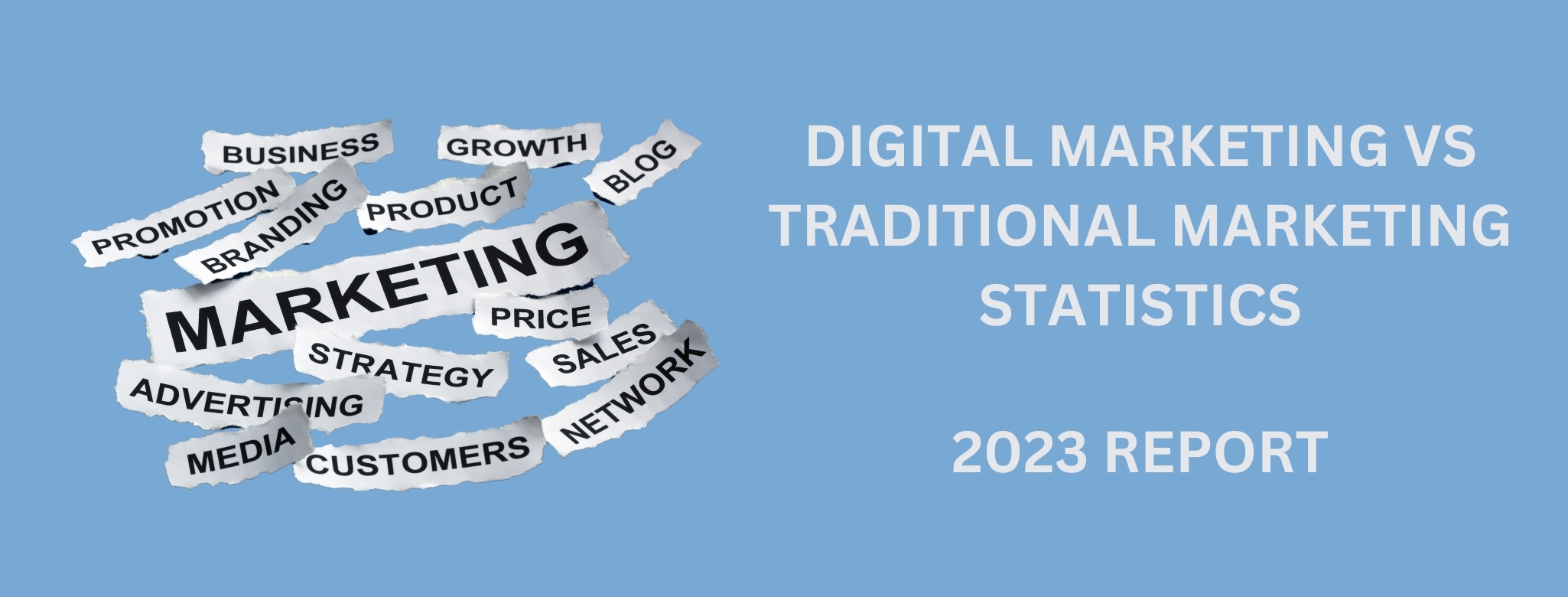
10 Jun TOP DIGITAL MARKETING VS TRADITIONAL MARKETING STATISTICS IN 2023
Digital marketing and traditional marketing are two terms that are often used interchangeably, but there are some key differences between the two. Digital marketing is any form of marketing that takes place online, while traditional marketing includes offline channels such as print, television, and radio.
According to a recent study, boomers spend nearly twice as much time consuming traditional marketing media, compared to millennials. This is just one of the many digital marketing vs traditional marketing statistics that show how the landscape is shifting.
Another statistic that is worth considering is that the close rate of SEO B2B marketing is almost 8 times higher than that of traditional marketing. On the other side, TV advertising is responsible for as much as 72% of all brand awareness. However, it is important to note that TV advertising budgets have been declining in recent years.
Social media is also playing an increasingly important role in promoting content. In fact, 90% of businesses said that social media was their primary or secondary channel for promoting content.
Below is Amra & Elma’s list of some digital marketing vs traditional marketing statistics:
Digital Marketing Vs Traditional Marketing Statistics in 2023 (Editors Choice)
- Boomers spend nearly twice as much time consuming traditional marketing media, compared to millennials
- 70% of consumers want to learn about products through content, such as articles or blog posts, as opposed to traditional ad methods
- The close rate of SEO B2B marketing is almost 8 times higher than that of traditional marketing
- TV advertising is responsible for as much as 72% of all brand awareness
- 90% of businesses said that social media was their primary or secondary channel for promoting content
- 49% of all consumers aged between 18 and 29 have made a purchase after viewing a social media ad
- 39% of customers say they try a business for the first time because of direct mail advertising
Top 21 Digital Marketing Vs Traditional Marketing Statistics in 2023
DIGITAL MARKETING VS TRADITIONAL MARKETING STATISTICS #1 – digital marketing generates 50% more interactions with customers than traditional marketing
Digital marketing, which includes online advertising and social media campaigns, provides a more direct way to reach and engage potential customers. According to a recent study, digital marketing generates 50% more interactions with customers than traditional marketing. This is due in part to the fact that digital marketing is more targeted and personalized than its traditional counterpart.
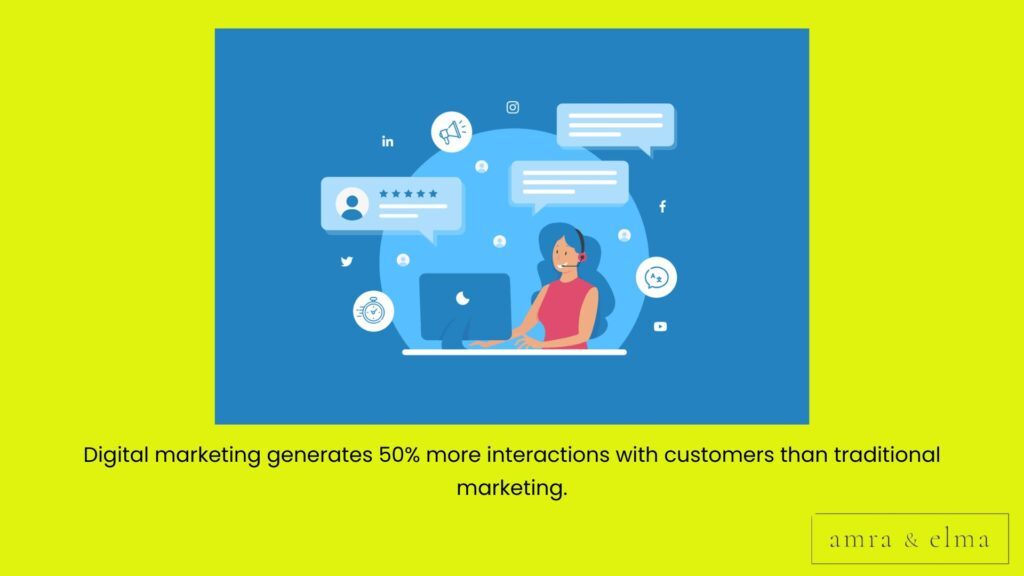
DIGITAL MARKETING VS TRADITIONAL MARKETING STATISTICS #2 – traditional advertising spending is expected to increase by 0.55% in the next 12 months, while digital marketing spending is projected to increase by 13.59%
According to a survey of U.S. B2B marketers, traditional advertising spending is expected to increase by 0.55 percent in the next 12 months, while digital marketing spending is projected to increase by 13.59 percent. The survey, conducted between January and February of 2022, asked respondents about their plans for traditional and digital media spending in the coming year. B2B product focused marketers were among those surveyed, and they reported that they expected their spending on traditional advertising to increase while their digital marketing budget would see a greater jump.
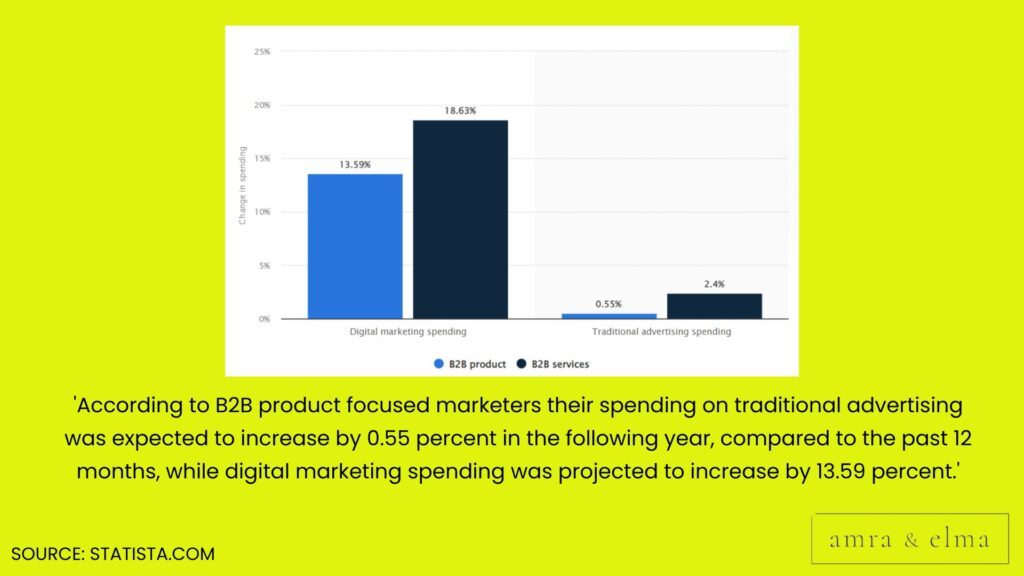
DIGITAL MARKETING VS TRADITIONAL MARKETING STATISTICS #3 – in 2020, TV advertising spending in North America amounted to approximately $65 billion, down from $69 billion in the previous year.
According to Statista, following the outbreak of the coronavirus in 2020, global television advertising revenue took a hit, dropping to $141 billion. Advertising revenue declined sharply as businesses cut back on spending and viewers stayed home. Although revenues are expected to recover in the next few years, digital media has already overtaken TV as the top advertising medium worldwide.
In 2020, TV advertising spending in North America amounted to approximately $65 billion, down from $69 billion in the previous year. The coronavirus pandemic has accelerated the shift from traditional TV to digital platforms, and it is unlikely that TV will regain its former position as the dominant advertising medium.

DIGITAL MARKETING VS TRADITIONAL MARKETING STATISTICS #4 – content marketing costs 62% less than traditional methods and it generates 3x more leads
Traditional marketing methods can be quite costly, often eating up a large portion of the budget. Content marketing is a more cost-effective alternative that can help reach the target audience. As per DemandMetric, content marketing costs 62% less than traditional methods and it generates 3x more leads.
DIGITAL MARKETING VS TRADITIONAL MARKETING STATISTICS #5 – 70% of consumers want to learn about products through content, such as articles or blog posts, as opposed to traditional ad methods
According to a recent study, 70% of consumers want to learn about products through content, such as articles or blog posts, as opposed to traditional ad methods such as television commercials or print ads. This preference for content over ads is likely due to the fact that content feels more trustworthy and authoritative.
DIGITAL MARKETING VS TRADITIONAL MARKETING STATISTICS #6 – 44% of respondents could recall a brand immediately after seeing a digital ad and 75% of people who received direct mail were able to remember the brand
New research indicates that direct mail may be more effective than digital advertising when it comes to brand recall. According to Marketing Profs, only 44% of respondents could recall a brand immediately after seeing a digital ad. In contrast, 75% of people who received direct mail were able to remember the brand.
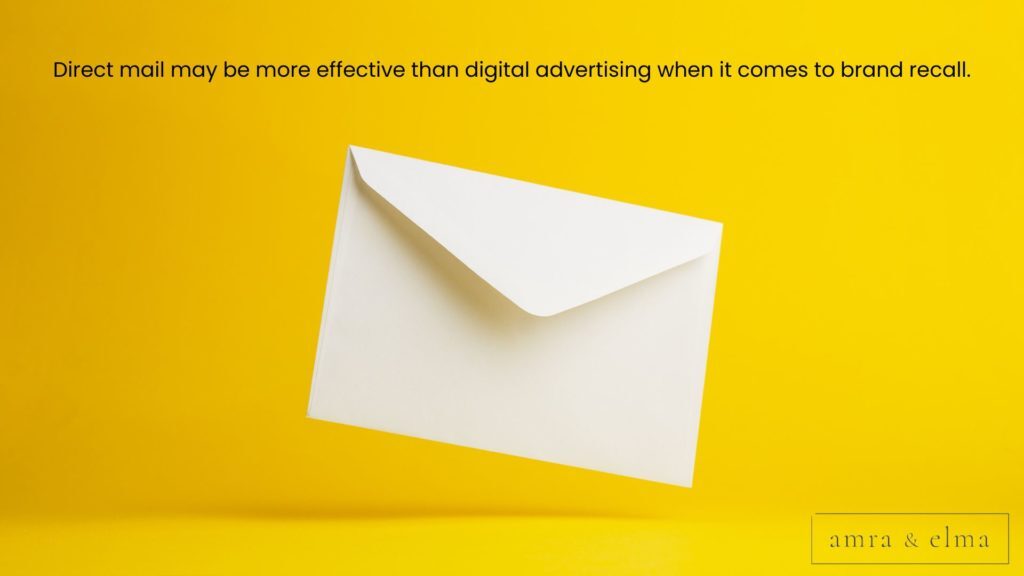
DIGITAL MARKETING VS TRADITIONAL MARKETING STATISTICS #7 – 41% of marketers believe that events are more effective than digital advertising, email, and content marketing
A recent study by Bizzabo found that 41% of marketers believe that events are more effective than digital advertising, email, and content marketing. Events provide a unique opportunity for customers and prospects to interact with the brand in person.

DIGITAL MARKETING VS TRADITIONAL MARKETING STATISTICS #8 – 64% of consumers say watching a marketing video on Facebook has influenced their purchase decision in the last month
A study from Animoto shows that 64% of consumers say watching a marketing video on Facebook has influenced their purchase decision in the last month. Video is one of the most consumed types of content on the internet, with people spending an average of 100 minutes per day watching videos on their phones. And Facebook is the leading social media platform for videos, with over 8 billion views per day. If you’re looking to enhance your social media marketing strategy, leveraging a compelling Facebook post templates could significantly amplify your reach and engagement levels on this influential platform.
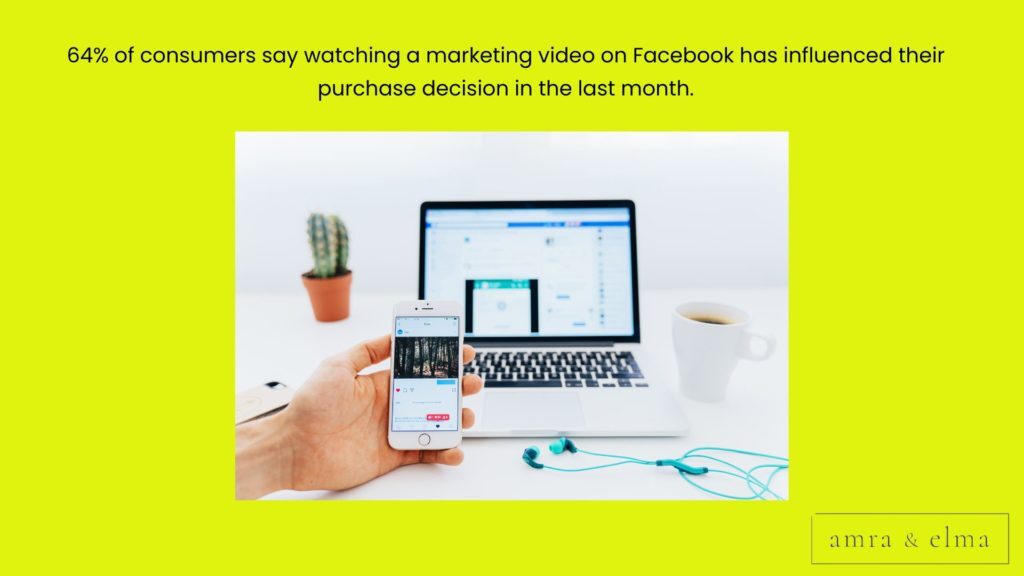
DIGITAL MARKETING VS TRADITIONAL MARKETING STATISTICS #9 – 79% of households say they read or scan direct mail ads
According to the US Postal Service’s (USPS) Certified Direct Mail Professional (CDMP) program, direct mail remains an effective way to reach potential customers. In fact, survey found that 79% of households say they read or scan direct mail ads. This means they’re not only likely to read direct mail, but nearly 80% of households actually do it.
DIGITAL MARKETING VS TRADITIONAL MARKETING STATISTICS #10 – 60% of marketers across various industries have already shifted their efforts toward digital marketing
With the advent of digital media, businesses have been forced to adapt their marketing strategies to keep up with the times. According to research, 60% of marketers across various industries have already shifted their efforts toward digital marketing. This shift has been driven by a number of factors, including the proliferation of mobile devices, the rise of social media, and the increasing availability of data.
DIGITAL MARKETING VS TRADITIONAL MARKETING STATISTICS #11 – 56% of customers find print marketing to be the most trustworthy type of marketing
In a world full of different marketing messages, it can be hard to know who to trust. Luckily, a recent study has shed some light on this issue. The study found that 56% of customers find print marketing to be the most trustworthy type of marketing. This is likely due to the fact that print marketing is tangible and visible, unlike many other forms of marketing that rely on intangible things like reputation or brand recognition.
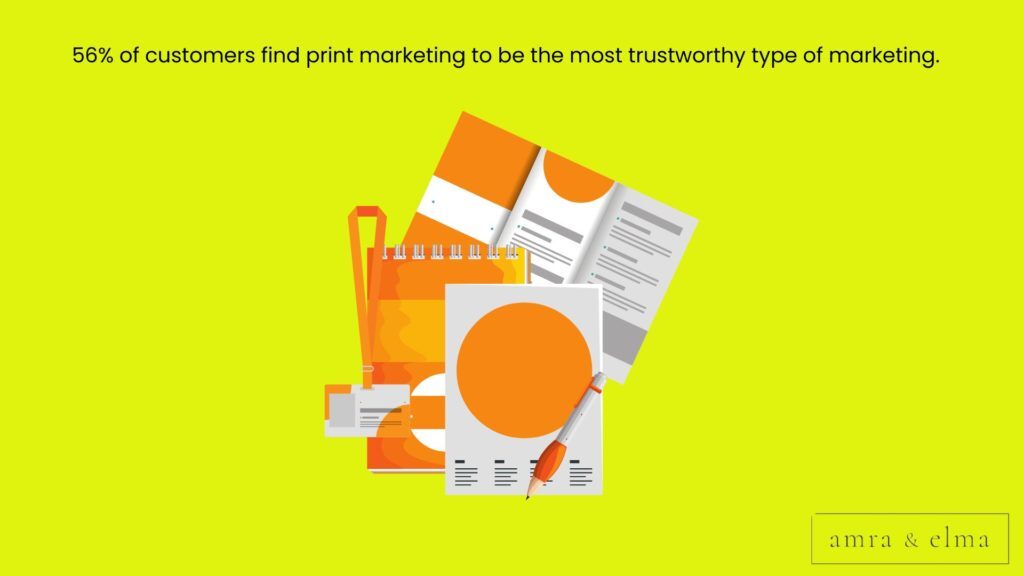
DIGITAL MARKETING VS TRADITIONAL MARKETING STATISTICS #12 – 39% of customers say they try a business for the first time because of direct mail advertising
According to US Data Corporation, 39% of customers say they try a business for the first time because of direct mail advertising. Furthermore, the study found that direct mail is more likely to be noticed and acted upon than other forms of advertising, such as email or online ads. This is likely due to the fact that people are bombarded with hundreds of emails and online ads every day, making it easy for them to tune out this kind of marketing.
According to Statista, nearly half (49%) of all consumers aged between 18 and 29 have made a purchase after viewing a social media ad. That’s a significant portion of the population, and it’s only likely to grow as social media usage continues to increase.
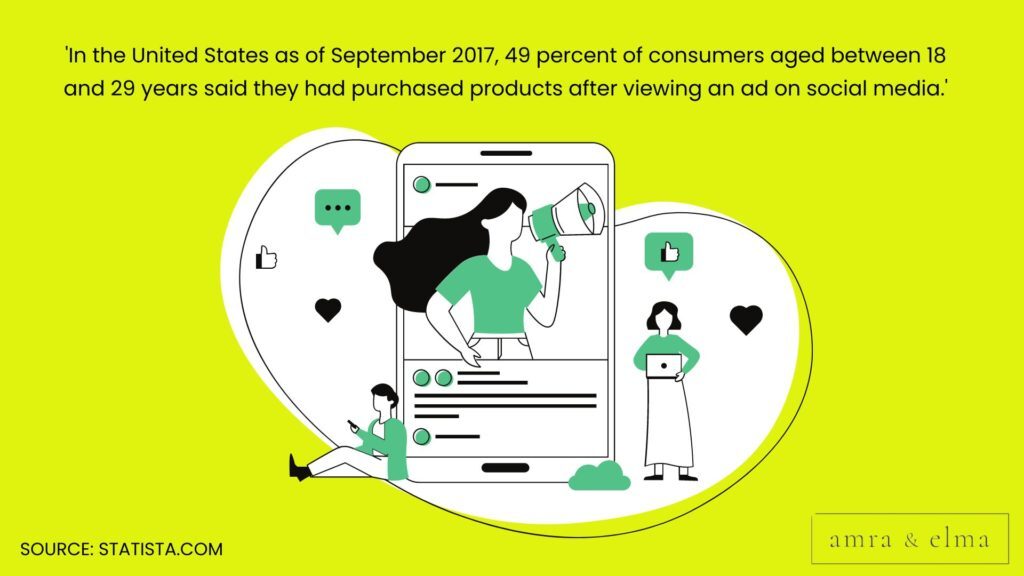
DIGITAL MARKETING VS TRADITIONAL MARKETING STATISTICS #14 – boomers spend nearly twice as much time consuming traditional marketing media, compared to millennials
A recent report from the Luxury Institute found that upper-middle-class baby boomers are still heavily engaged with traditional marketing media, such as television, newspapers, and magazines. The study found that boomers spend nearly twice as much time consuming these types of media, compared to millennials. Interestingly, the study also found that boomers are more likely to take action after seeing an ad in a traditional medium, such as making a purchase or contacting a company.
DIGITAL MARKETING VS TRADITIONAL MARKETING STATISTICS #15 – 81% of consumers go online to do research before heading out to the store and making a purchase
According to GE Capital Retail Bank’s study, 81% of consumers go online to do research before heading out to the store and making a purchase, up 20% from last year. And they’re not just looking at one website – on average, shoppers spend 79 days collecting information before making a major purchase according to this agency. This increase in online research is likely due to the growing number of resources available to consumers.
With just a few clicks, shoppers can compare prices, read product reviews, and find out about special deals and promotions. In addition, many retailers now offer the option to purchase items online, making it even easier for consumers to get the best possible deal.
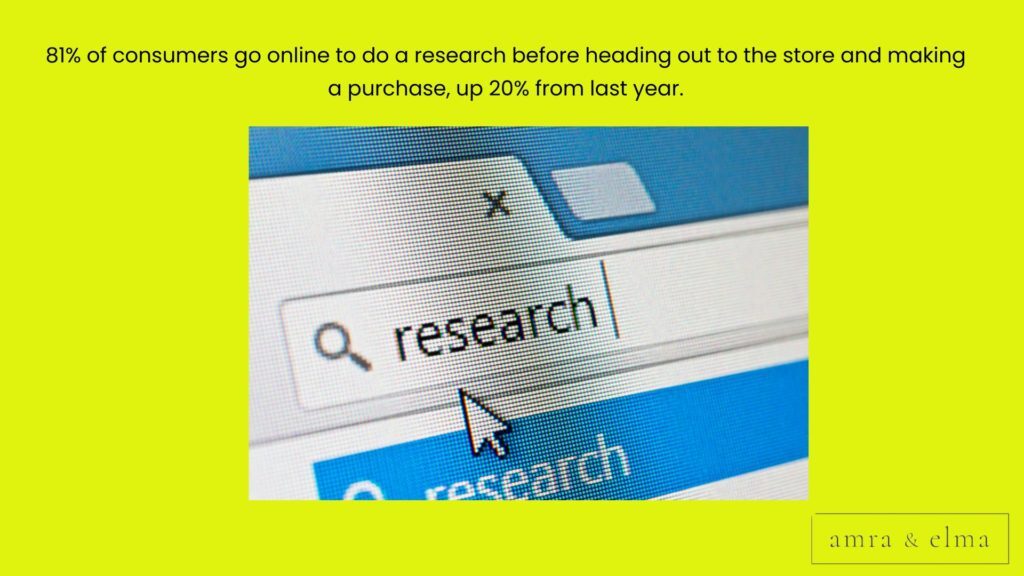
DIGITAL MARKETING VS TRADITIONAL MARKETING STATISTICS #16 – Facebook is used by more than 60% of all Americans on a regular basis
According to a research, Facebook is used by more than 60% of all Americans on a regular basis. Seven in ten Facebook users say they use the site daily, and 49% who say they use the site several times a day. Despite concerns about privacy and data breaches, the platform has more than 2 billion active users worldwide and continues to grow in popularity
A recent survey of B2C businesses found that social media is their most successful content marketing strategy. 90% of businesses said that social media was their primary or secondary channel for promoting content, and nearly 80% said that it was their most effective channel.
The survey also found that businesses are using social media to target specific audiences, create engaging content, and drive conversions. In addition, businesses are using social media to track leads and customers and to measure the success of their campaigns.
DIGITAL MARKETING VS TRADITIONAL MARKETING STATISTICS #18 – TV advertising is responsible for as much as 72% of all brand awareness
Studies have shown that consumers are 11 times more likely to search for a product if they have seen it on TV and that TV advertising is responsible for as much as 72% of all brand awareness. Additionally, customers are more motivated to buy a product if they see it on TV than if they see it anywhere else.
DIGITAL MARKETING VS TRADITIONAL MARKETING STATISTICS #19 – print advertising is the most trusted format, with 82% of respondents saying that they trust it when making purchasing decisions
A recent survey by MarketingSherpa found that the most trusted advertising formats are all traditional media. Print advertising, such as newspaper and magazine ads, is the most trusted format, with 82% of respondents saying that they trust it when making purchasing decisions. Television advertising is the second most trusted format, with 80% of respondents saying that they trust it.
Direct mail advertising, such as flyers and coupons, is the third most trusted format, with 76% of respondents saying that they trust it. Radio advertising is the fourth most trusted format, with 71% of respondents saying that they trust it. Finally, outdoor advertising, such as billboards and bus stop ads, is the fifth most trusted format, with 70% of respondents trusting it.

DIGITAL MARKETING VS TRADITIONAL MARKETING STATISTICS #20 – nearly half of the organizations believe that the transition from traditional to digital marketing has been quite productive
In the past few years, many organizations have transitioned from traditional marketing to digital marketing. Nearly half of these organizations believe that this decision has been quite productive. The main reason for this is that digital marketing is more cost effective than traditional marketing.
DIGITAL MARKETING VS TRADITIONAL MARKETING STATISTICS #21 – the close rate of SEO B2B marketing is almost 8 times higher than that of traditional marketing
SEO B2B marketing is a type of internet marketing that focuses on improving the visibility of a website in search engine results pages (SERPs). The goal of SEO B2B marketing is to attract more visitors to a website by improving its rank in the search engine results. The close rate of SEO B2B marketing is almost 8 times higher than that of traditional marketing.
Digital Marketing Vs Traditional Marketing Statistics – The Future of Marketing
As the world becomes more and more digital, the role of traditional marketing methods has come into question. Are they still effective? Do consumers even pay attention to them anymore? The answer, it seems, is a resounding yes.
While the landscape of marketing is changing, traditional methods still have an important role to play. This is especially true when it comes to advertising. A recent study found that 49% of consumers aged 18-29 have made a purchase after viewing a social media ad. This suggests that digital marketing methods are having an impact.
However, the study also found that 39% of customers say they try a business for the first time because of direct mail advertising. This demonstrates that traditional methods can still be highly effective.
It seems clear that the future of marketing lies in a combination of both digital and traditional methods.
In Conclusion: What Is the Biggest Difference Between Digital Marketing vs Traditional Marketing?
Perhaps the most obvious difference between digital marketing vs traditional marketing is that digital marketing utilizes digital technologies, such as the internet and mobile devices, while traditional marketing relies on more traditional methods, such as print advertising and television commercials. Digital marketing has become increasingly popular in recent years due to the widespread use of internet-connected devices, such as smartphones and tablets. A recent study found that 78% of Americans now own a smartphone, making it the most common device for accessing the internet. This has led to a massive increase in the use of mobile apps and websites for shopping, banking, and other activities.
Another major difference between digital marketing vs traditional marketing is the way they are measured. Traditional marketing metrics, such as reach and exposure, are based on things like audience size and viewership numbers. Digital marketing metrics, on the other hand, focus on engagement and click-through rates. For example, web traffic can be measured in terms of page views, time on site, or bounce rate. Similarly, social media metrics track things like likes, shares, and engagement rates. This shift towards engagement-based metrics has been driven by changes in how people consume content. With so much content available online, users are more likely to skip over ads or articles that don’t interest them. As a result, advertisers need to focus on creating content that is engaging and relevant to their target audience.
Despite these digital marketing vs traditional marketing differences, there are also many similarities between digital marketing vs traditional marketing. Both channels can be used to build brand awareness and create leads. Additionally, both can be effective ways to communicate with customers and promote products or services. Ultimately, it’s important to understand the unique strengths of each channel to create an effective marketing strategy.
When discussing digital marketing vs traditional marketing, we also have to understand that they are two very different things. With digital marketing, businesses can communicate with their customers through a variety of electronic channels such as websites, email, social media, and text messaging. Traditional marketing, on the other hand, uses more traditional methods such as TV commercials, print advertisements, and direct mail.
The biggest difference between digital marketing vs traditional marketing is that digital marketing is much more interactive. With digital marketing, businesses can communicate directly with their customers through email, social media, and text messaging. This allows businesses to better understand their customers’ needs and preferences, which leads to a better customer experience.
When discussing digital marketing vs traditional marketing, we have to understand that traditional marketing is becoming less and less effective every day. TV commercials are no longer as effective as they used to be, and people are less likely to respond to print advertisements or direct mail. On the other hand, digital marketing is constantly growing in popularity. More and more people are using the internet and social media to find information about products and services. As a business, it is important to stay up-to-date with the latest trends in digital marketing to reach your target audience.
TOP DIGITAL MARKETING VS TRADITIONAL MARKETING STATISTICS IN 2023- FAQ
What are some of the main differences between traditional marketing vs digital marketing?
Traditional marketing vs digital marketing is two different ways of reaching out to customers. Traditional marketing is more about reaching out to a large audience with a unified message, while digital marketing allows for more customization and targeting of potential customers.
When talking about traditional marketing vs digital marketing, we have to realize that traditional marketing relies mainly on advertising methods such as television, radio, and print media. These methods are effective at reaching a large number of people, but they are not very effective at targeting specific customers. Digital marketing, on the same note as traditional marketing vs digital marketing, uses online methods such as websites, search engines, and email to reach potential customers.
When discussing traditional marketing vs digital marketing, digital marketing also allows businesses to track their results more closely. With traditional marketing methods, businesses can only guess how effective their advertising was. With digital marketing, businesses can track how many people visit their websites, how many people click on their ads, and how many people purchase their products.
Overall, when talking about traditional marketing vs digital marketing, we understand that traditional marketing is better at reaching a large number of people while digital marketing is better at targeting specific customers. Traditional marketing is less expensive but less effective than digital marketing. Digital marketing is more expensive but more effective than traditional marketing, which is one of the main differences between traditional marketing vs digital marketing.
Which is more effective: traditional marketing vs digital marketing?
The answer to which is more effective: traditional marketing vs digital marketing, is not a simple one, as there are pros and cons to both traditional and digital marketing. However, when it comes down to traditional marketing vs digital marketing, digital marketing is more effective than traditional marketing.
But, let’s start with traditional marketing when discussing traditional marketing vs digital marketing. One of the biggest drawbacks of traditional marketing is its inability to target a specific audience. With traditional marketing methods like TV ads and print ads, you are essentially casting a wide net in the hopes of catching the attention of your target audience.
Digital marketing, on the other hand, when we’re discussing traditional marketing vs digital marketing, is extremely targeted. With digital marketing methods like email marketing and social media advertising, you can laser-focus your efforts on reaching only the people who are most likely to be interested in what you have to offer.
Another big advantage of digital marketing, when talking about traditional marketing vs digital marketing, is its ability to create a personal connection with consumers. Due to the nature of digital media, consumers have a much more personal relationship with brands than they do with traditional brands. This means that they are more likely to trust and respond to messages from digital brands than traditional brands.
All things considered, it’s clear that, when discussing traditional marketing vs digital marketing, digital marketing is more effective than traditional marketing, and it’s more often used by brands.
What are some of the most effective traditional marketing methods?
Traditional marketing methods can be defined as promotional activities that are carried out in traditional, offline formats. Traditional marketing methods include print media such as magazines and newspapers, broadcast media such as television and radio, direct mail, and outdoor advertising such as billboards and signage. With the rise of digital and online marketing channels over the past decade, traditional marketing methods have been somewhat overlooked.
One of the most effective forms of traditional marketing methods is direct mail campaigns. Direct mail as one of the traditional marketing methods involves sending physical flyers, brochures, or catalogs directly to a targeted list of customers or prospects. It is an excellent part of traditional marketing methods that build brand recognition and loyalty among existing customers while also being effective at garnering new leads.
Another effective type of traditional marketing method is public relations (PR) which involves communicating with various groups such as journalists, bloggers, and industry influencers in order create positive press coverage for your business or brand. Through PR activities as one of the best traditional marketing methods you can build credibility with potential customers by sharing stories about your business or industry successes.
Lastly, radio advertisements remain one of the most affordable types of traditional marketing methods available today due largely to their wide reach across different demographics and their ability to deliver frequent reminders at a low cost per impression compared to other mediums like TV commercials. Radio spots as one part of traditional marketing methods typically include narrations delivered by voiceover talent that explain the benefits associated with specific products or services offering listeners an engaging experience that’s hard to ignore when done right!
What is the difference between traditional marketing methods and digital marketing strategies?
The difference between traditional marketing methods and digital marketing strategies is vast. Traditional marketing methods typically use physical media such as print ads in magazines and newspapers, radio and television commercials, direct mail pieces, billboards, etc. to reach potential customers. Digital marketing on the other hand relies heavily on the internet for its reach. This includes using websites, email campaigns, and online advertising such as search engine optimization (SEO), social media campaigns, blogs, videos, podcasts, webinars, and more to target potential customers.
For starters, traditional marketing methods tend to be much more expensive than digital ones due to their reliance on physical media that require production costs and labor hours for distribution. On the other hand, digital marketing requires no physical mediums and can be sent out virtually instantaneously at a fraction of the cost of traditional methods.
Additionally, another difference between traditional marketing methods vs. digital is that when it comes to content creation there is much more control over how quickly changes or updates can be made with digital campaigns versus physical materials that must go through a long process before being released into the public eye. Not only does this allow for faster turnaround time but also provides brands with greater flexibility if changes need to be made quickly due to market shifts or current events that could influence messaging needs.
Finally from a creative perspective, there’s also a lot more freedom when it comes to designing dynamic creative elements for digital campaigns rather than in traditional marketing methods. These campaigns adhere closely to branding standards rather than having limited choices due to constraints related to working within traditional marketing methods such as print or television advertising formats where space is restricted compared to what’s available online with banner ads or video spots on YouTube for example.
What is the most relevant digital marketing vs traditional marketing statistics for 2023?
According to digital marketing vs traditional marketing statistics, digital marketing has seen tremendous growth in recent years and is expected to continue to grow into 2023. With the rise of digital technologies, marketers can track and analyze data more effectively than ever before, especially through digital marketing vs traditional marketing statistics, allowing them to gain insights into customer behavior and preferences that can be used to make strategic decisions. As a result, using digital marketing vs traditional marketing statistics to understand how digital marketing compares to traditional marketing will be increasingly important to remain competitive in the future.
When discussing digital marketing vs traditional marketing statistics, some of the most relevant statistics include the number of internet users worldwide (4.5 billion), online advertising spends ($333 billion), social media users (almost 3.8 billion), and e-commerce sales (over $3 trillion). These digital marketing vs traditional marketing statistics figures indicate that digital channels are becoming increasingly popular among consumers and businesses alike, as well as demonstrating their impact on the global economy.
In addition, some key digital marketing vs traditional marketing statistics includes an increase in mobile usage (as people spend more time on their phones or tablets); an increase in voice search; an increase in personalized content; increased use of AI-infused tools; increased investment in video content; more emphasis on influencer marketing; increased use of chatbots for customer service; and greater reliance on data science for decision making.
It is clear by the current digital marketing vs traditional marketing statistics that digital marketing has become increasingly prominent over recent years and will become even more so as we move forward into 2023. By utilizing these new technologies and trends and understanding some of the most relevant digital marketing vs traditional marketing statistics, businesses can better understand customer needs, reach potential customers through targeted campaigns, measure performance accurately with analytics tools, optimize costs through automation processes, and more.
According to digital marketing vs traditional marketing statistics for 2023, which marketing strategy is more used?
Digital marketing and traditional marketing are strategies used to increase consumer awareness of products or services, drive sales, and/or build brand visibility. According to digital marketing vs traditional marketing statistics for 2023, it is clear that digital marketing is increasing in popularity and becoming the preferred strategy of choice.
A key factor in digital marketing vs traditional marketing statistics that are driving the increased use of digital marketing is its significantly lower costs compared to traditional forms of advertising. Digital marketers can use digital marketing vs traditional marketing statistics to utilize more targeted campaigns than traditional marketers, allowing them to zero in on the right audiences at the right times. Additionally, digital marketers have access to a wide range of platforms—from social media networks such as Facebook, Twitter, and YouTube, to email blasts and blogs—that help propel their message out into the world quickly and cost-effectively.
Furthermore, the same study of digital marketing vs traditional marketing statistics shows that digital channels provide a wealth of analytics data — from website visits to sales conversions — that allows marketers to measure their effectiveness in real-time. This data allows marketers to hone their strategies mid-campaign if need be or even assess what went wrong should their efforts fail. Traditional channels are also shown through digital marketing vs traditional marketing statistics, and they don’t offer this kind of data analysis capability; instead relying on surveys and feedback forms that typically lag far behind results by several weeks.

